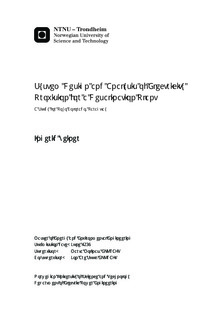| dc.description.abstract | Fresh water scarcity and drinking water quality is a challenge in Pozo Colorado, a district in the northern part of Paraguay. The area has groundwater resources that have not yet been exploited, but this water is saline and undrinkable unless it is treated. Establishing a brackish water reverse osmosis (BWRO) desalination plant that produces potable water could be a solution to the problem. With high solar intensity in the region, a grid-connected battery back-up PV system could provide a reliable electricity supply to the plant. For areas that lack grid-connection, electricity provision from a stand-alone PV supply with diesel generator could be a possibility. In this master project, a BWRO plant is designed for Pozo Colorado to cover the demand of potable water in the village. Three construction stages are suggested for the plant, with associated energy supply systems. In all stages, grid electricity is the main energy source. In Stage 1, a back-up PV supply with battery storage is designed for the distribution pump only, for reliability reasons. In Stage 2 and Stage 3, the PV system is expanded to 12 kWp and then further to 20 kWp. Cost estimates for the desalination plant and the energy supply systems are presented for every stage. If a 25 year period is considered, the water cost in Stage 3 will be 15-30 % lower than the current cost of water in Pozo Colorado. With the current power price in Paraguay it would not be economically feasible to install PV panels in Pozo Colorado without subsidies. From simulations in the software HOMER, it was found that the price would have to increase by as much as 75 % in order to make introduction of PV modules feasible. By creation of a synthetic electricity market with hourly variations, it was found that the average price only has to increase by 21 % in order to make PV introduction feasible. For a situation where energy is supplied from a stand-alone PV system, different operational regimes for the plant were evaluated. Based on costs of membranes and batteries, it was found that it would be more economical to use water as storage medium for solar energy instead of batteries. A three-step profile with production during the day and no production during night-time was found to be optimal from an economic point of view. Overall this project reveals that a BWRO desalination plant supplied by a grid-connected PV system is a promising solution for Pozo Colorado. For areas that lack grid-connection, a stand-alone PV supply with diesel generator would be feasible, and in such a situation the operational regime of the plant will highly affect system configuration and costs. | nb_NO |

